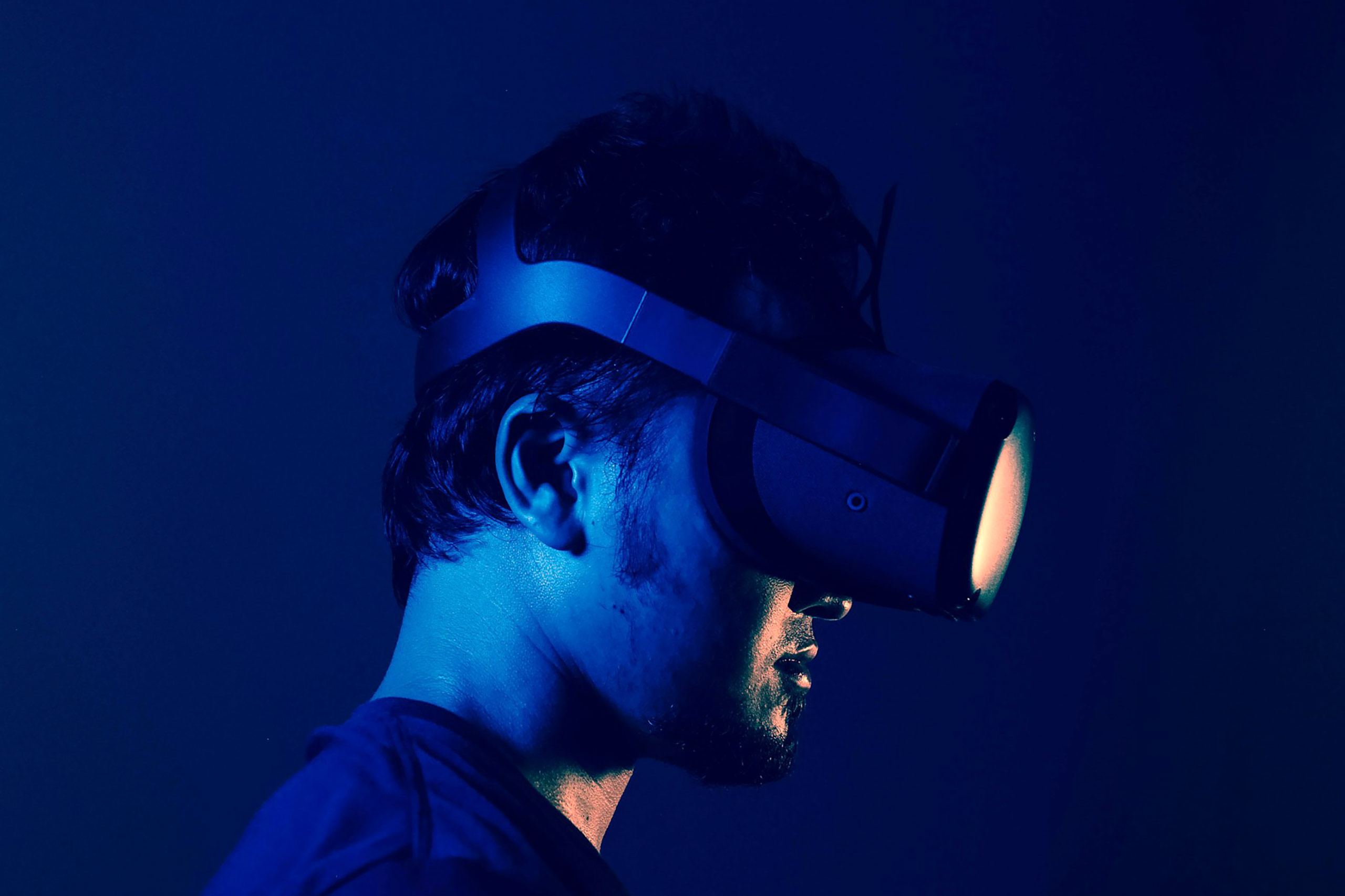Once touted as the “next big thing”, Virtual Reality has joined a growing roster of tech innovations that miss the point of what technology once promised: to solve problems or make our lives more enjoyable. And as Zack Cahill shares in the latest edition of The Layover, the industry doesn’t care, so long as you believe its next “innovation” is the actual next big thing.
Virtual Reality should be here by now. Back in the ‘90s, VR was the hotness. The industry had us convinced that in a few short years, we’d be scaling Everest, hiking on Mars, and shagging our celeb crushes, all from the comfort of our living rooms. Sure, the graphics were crap – just lurid, jagged polygons (which scuppered the celebrity sex thing. What’s the point in banging Brad Pitt if he’s just a bunch of triangles?).
However, pop culture showed us thrilling glimpses of a future in Virtual Reality, regardless. My favourite absurd example is the thoroughly non-seminal Demi Moore/Michael Douglas erotic thriller Disclosure. In one scene, Douglas puts on a VR headset, his drab office disappears, and he finds himself in a vast futuristic library where he… opens a drawer and pulls out a file.
But back then, it seemed inevitable. At the rate technology advances (Moore’s Law famously dictates that the number of transistors on a microchip doubles every two years) it was all but certain that we’d be whizzing around photorealistic digital worlds by the mid-2000s. So why aren’t we?
Sure, VR exists, but it’s nothing like the all-pervasive, immersive experience we were promised. There are some obvious technical reasons. Headsets are still clunky and uncomfortable, with a limited field of view. And even if they were better, we’d still need some hyper-advanced haptic body suit, or an actual neural interface, like the one Elon Musk is working on, presumably so he can bypass your phone and shovel deranged propaganda directly into your cortex.
And then there’s the nausea problem. Studies suggest somewhere between 25% and 60% of people experience some level of motion sickness in Virtual Reality. Picture it: you’re soaring above the glaciers of Jupiter’s moon, drinking in the majesty of the alien landscape below, when all of a sudden, your stomach lurches and your pricey headset is awash with lukewarm spew.
Personally, I have an extremely delicate inner ear. I once got seasick on the rowboats in London’s Victoria Park. As a kid, I loved video games, but as soon as 3D graphics came in, I had to tap out. The dissonance of chunky sixteen-bit graphics telling me I was driving Mario down Rainbow Road, while my body insisted it was in a two-bed duplex in Dublin, was too much for me.
But the real issue isn’t just technological limitations. It’s that, somewhere in the last decade or so, Big Tech forgot how to make things people actually want. Can you remember the last time a major tech company produced something truly useful? Contactless payment, maybe?
Let’s put things into perspective. Some people say AI is the most important invention in human history. Really? More important than the flush toilet? I mean, sure, I like having the ability to generate an image of Snoopy in lingerie, but I like not shitting in the street a lot better.

At a certain point, the tech industry decided that solving actual problems or even creating positive user experiences was just too much like hard work. Why bother, when you can just convince a credulous market and a profligate investor class to believe in whatever bullshit you claim? That’s why we don’t get flying cars. That’s why we don’t get to travel the stars from our living room. What we get instead is a cavalcade of “next big things”, buoyed by false hype and desperation.
Right now it’s AI. Silicon Valley needs AI to be the next big thing. I’m not buying it. Yes, I know AI can summarise meeting notes and draft emails. But do you pay for it? Do you realise how much those interactions cost the companies and the environment? Are we really going to burn down a rainforest just so we can have a slightly more convenient, though often wrong version of Google?
AI is not a business. It’s just the latest prop in a game tech companies play with the market called “make numbers go up”:
- Augmented reality is the next big thing
- 3D TVs are the next big thing
- Crypto is the next big thing
- NFTs
- The Metaverse
- AI, for realsies!
- Quantum computing
Each one is breathlessly touted as an evolutionary leap in technology – touted, of course, by people whose wealth depends on you believing it is. Even articles that warn of a Terminator-style AI apocalypse function as propaganda. Because they imply that there’s a direct path from today’s AI to some general superintelligence. But there isn’t. That’s not how large language models work.
The major AI companies only exist right now because they’re being financially carried, at astronomical cost, by Microsoft, Google, and Meta. Meanwhile, OpenAI burns through $5 billion a year and has no path to profitability.
And that’s the real reason the future doesn’t look exciting. Because the people driving it aren’t exciting. They’re a bunch of drab losers who have lost the ability to invent (if they ever even had it). They’ve stopped competing for customers and started competing for “growth opportunities”. And we, the users, are nothing more than numbers on a spreadsheet.
Look at Facebook’s relentless focus on “engagement” over usability. Your friends’ posts are hidden, while spam is pushed to the top of your feed. The deliberate degradation of a product that – believe it or not – used to be somewhat fun is a perfect example of the “make numbers go up” philosophy. Contempt for the user. A total detachment from utility.
Now, green shoots of hope are there. The public has roundly rejected certain “innovations” like augmented reality glasses. Brick phones are making a comeback. The market for physical media like DVDs, books, and even vinyl has grown significantly.
And funny enough, for all its faults, we prefer actual reality to the virtual kind. There’s no getting around that. It’s built into us. Given the choice between exploring Saturn in VR and drinking a beer on a plastic chair in a roadside bar in Koh Phi Phi, most of us will get more value from the latter. And that is before you even factor in the puke-filled helmet.
Illustration by Martin Perry, photography via Unsplash






